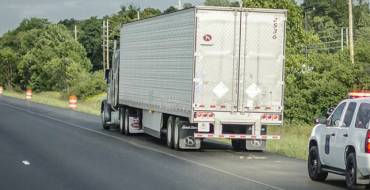Best Car Insurance Quotes
Department Of Transportation Truck Inspections
11 Jul, 2023
0 Comments

Best Car Insurance Quotes
When you have a vehicle weighing over 10,000lbs then you’re going to have to undergo annual DOT inspections to make sure your vehicle is legal for the road.
What Is A DOT Inspection
A DOT inspection is an inspection conducted by the Department of Transportation to ensure that all the CMV parts and accessories are safe to use, in good condition, and working properly. All commercial motor vehicles (CMV) that weigh more than 10,000 pounds must undergo annual DOT inspections. A DOT inspection is an inspection conducted by the Department of Transportation to ensure that all the CMV parts and accessories are safe to use, in good condition, and working properly. There are six primary levels of DOT inspections. These may be conducted anywhere by a qualified DOT inspector or state police officer. If you are running a large commercial vehicle, it should be expected that you’ll undergo regular inspections of your vehicle. Do all of the preventative maintenance well ahead of time, follow the DOT guidelines in regards to transportation of goods, and you shouldn’t have any problems.
Who Plays A Role In Truck Inspections?
State troopers play a role in truck inspections, The Federal Motor Carrier Safety Administration, and The Commercial Vehicle Safety Alliance. An important thing to remember, stay calm whenever an officer is performing an inspection. Don’t give them any undo cause to think you’re trying to pull off something illegal. Inspections are standard practice, and they don’t mean that you are specifically suspected of any wrong doing.
Levels Of Truck Inspection
1. Level I: North American Standard Inspection.
This level of inspection is pretty detailed, and the inspector performing it will check the driver's documents, in addition to looking for drugs, alcohol or hazardous materials that the driver may be transporting. This list includes:
- Driver's license
- Driver’s daily log and hours of service
- Driver and Vehicle Inspection Report
- Medical card and waiver
- Alcohol and/or drugs
- Hazmat requirements
In checking the vehicle, the evaluation will look at the following parts and accessories:
- Seatbelt
- Brakes
- Brake lamps
- Coupling devices
- Exhaust system
- Emergency exits and/or electrical cables and systems in the engine and battery compartments (buses)
- Frame
- Fuel system
- Headlamps
- Lamps on projecting loads
- Safe loading
- Securement of cargo
- Steering mechanism
- Stop lamps
- Suspension
- Tail lamps
- Tires
- Trailer bodies
- Turn signals
- Wheels, rims, and hubcaps
- Windshield wipers
2. Level II: Walk-Around Driver/Vehicle Inspection.
This inspection is almost identical to the level I evaluation, except that the inspector will not check any of the parts that require physically getting under the CMV.
3. Level III: Driver-Only Inspection.
At a level III inspection, you can expect an in-depth examination of the following list:
- Driver’s license
- Medical card
- Driver’s daily log
- Seatbelt
- Driver and Vehicle Inspection Report
- Driver incident history
- Hazmat requirements
4. Level IV: Special Inspection.
The level IV special inspection refers to a one-time examination conducted to take a closer look at a particular feature of the vehicle. This is usually done to invalidate a previous claim about the vehicle, in order to support or refute a study or suspected trend.
5. Level V: Vehicle-Only Inspection.
A level V inspection can be conducted at any location and includes everything in level I regarding the vehicle, but does not require a driver to be present.
6. Level VI: Enhanced NAS Inspection for Radioactive Shipments.
DOT regulations came into effect as of January 1, 2005, all CMVs transporting highway route controlled quantities (HRCQ) of radioactive material are required to pass the North American Standard Level VI Inspection. This inspection includes:
- Inspecting for radiological shipments
- Inspection procedures
- Enhancements to level I
- Radiological requirements
- Enhanced out of service criteria
What To Expect During A Roadside Check
Expect the officer, or inspector, to do a thorough inspection of your vehicle. If there are no violations, the official places a CVSA decal (valid for up to three months) on the vehicle.
The Most Common Violations
For drivers.
Common violations against drivers include:
- Logging violations
- No medical card, or it’s expired
- Invalid or expired license
- Not wearing a seat belt
- Exceeding HOS laws
For vehicles.
Common violations against CMVs include:
- Inoperable lights
- Tire tread depth below 2/32 of an inch
- Oil, grease, transmission fluid or fuel leaks
- No current annual inspection on file
- Improperly loaded cargo
- Discharged or unsecured fire extinguisher



